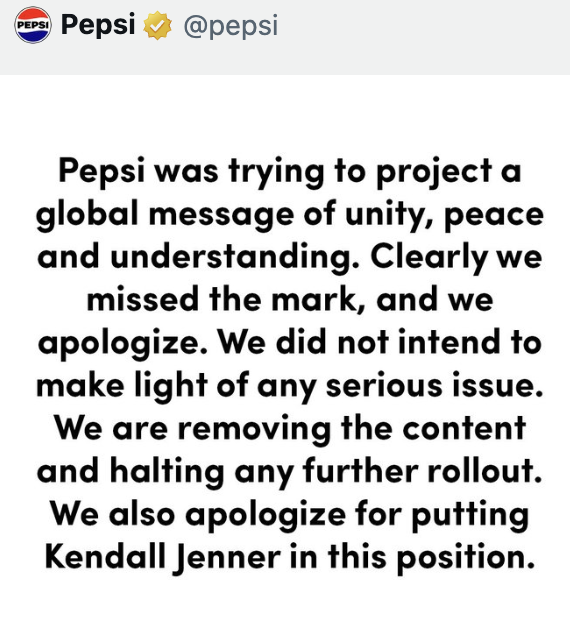Where Have All the Cowboys Gone? What You Need To Know About Audience Misunderstanding in Marketing
I'm sorry to tell you this, but whether you like it or not, your audience will always hear what they want to hear.
Audience misunderstanding in marketing isn't a bug, it's a feature of human communication. And if you're not planning for it, you're setting yourself up for a very expensive lesson in how people filter everything through their own expectations, biases, and the stories they've already decided are true.
Let me tell you a story about the cowboys who never existed.
The Love Song That Was Never About Love
A wise woman posed a question in 1996: "Where have all the cowboys gone?" Nearly everyone thought she was yearning for a hero. She wasn't.
Singer, songwriter Paula Cole wrote a song about the quiet suffocation of domestic life: the dishes, the diapers, the dandelion sun. About a partnership built on a convenient fiction—one that forgets to mention who's doing the actual work. She made it catchy enough for radio, ironic enough to sting, and America heard exactly what it wanted to hear: A love song. Nostalgia. A woman pining for better men to come save her.
““The story in the song isn’t about me. It’s about a sort of every woman, and I’m looking at her life — compassionately, I hope — and saying that, as much as we think we’re progressing, there’s still work to be done. For me, [the lyrics are] sarcastic.””
Those aren't the lyrics of someone searching for John Wayne. There is no yeehaw in that. They're the sigh of someone realizing the sold dream of happily ever after doesn't exist, and no prairie song or Marlboro Man is riding to rescue anyone.
Still, nobody got it. The satire was lost, buried under what listeners expected to hear instead of what was actually being said. “It was so bizarre,” Cole later said. “You put out a piece of work and you know what it means, but then you let it go out into the world and it’s like witnessing, I don’t know, like an anthropological study.”
This is audience misunderstanding in marketing at its finest (and most frustrating). It happens to brands every single day.
Your Clever Campaign Just Got Completely Misread
81% of consumers are likely to ignore marketing messages that aren't relevant to them, and 1 in 4 say receiving a generic message makes them less likely to purchase. Talk about a chasm. And before you blame your audience for not "getting it," consider this: 59% of Americans say most emails they receive are not useful to them.
Your audience isn't stupid. They're overwhelmed, distracted, and filtering everything through their existing worldview. Audience misunderstanding in marketing happens because people bring their own expectations, biases, and pre-written narratives to your work. Those filters are often stronger than your cleverest turn of phrase.
Your irony might sound sincere. Your critique might read like a celebration. Your subversion might get taken at face value. The audience doesn't see your creative brief, your brainstorming sessions, or your strategic intent. They see what they expect to see…and that's usually not what you meant.
When Good Intentions Go Horribly Wrong
Cole's song was brilliant satire in song form. But that was part of the problem—satire requires the audience to be in on the joke, and most people weren't paying close enough attention. They heard a catchy chorus, made assumptions based on genre expectations, and moved on with their lives, thinking they'd just heard another 90s love song.
Does this sound familiar at all? That's your marketing campaign getting misinterpreted in real-time. And you're in good company with some of the world's biggest brands that have spectacularly failed at this.
Pepsi's protest commercial featuring Kendall Jenner tried to align with activism but was widely condemned for trivializing serious social issues, particularly in light of the ongoing Black Lives Matter movement. Pepsi thought they were making a statement about unity. The internet thought they were trivializing protest movements. Intent was no longer relevant when perception is working against you.
Dove's "Real Beauty" campaign accidentally featured a Black woman appearing to turn into a white woman in an ad sequence. Dove meant to celebrate diversity. Audiences saw racism. The backlash was swift and brutal.
Bumble's 2024 billboard stated, "You know full well celibacy is not the answer," intended to be playful but met with immediate backlash for dismissing personal choices and failing to consider broader societal discussions around dating, autonomy, and consent. The message was supposed to start a conversation around dating. Instead, it alienated a significant chunk of their user base who felt the brand was being insensitive to those choosing celibacy for personal, religious, or cultural reasons.
All three brands had good intentions. All three catastrophically misread how their audience would interpret the message. And that's Cole’s “Where Have All The Cowboys Gone?” problem in a nutshell: what you mean and what they hear are often two completely different things.
What Your Audience Brings to Your Message (Whether You Like It or Not)
It’s 2025 and we’re still talking about this Dove ad flop.
Think about the last time you watched a movie with someone and walked out with completely different interpretations. Same film, same dialogue, wildly different takeaways. That's not because one of you is wrong. It's because you brought different lenses to the same experience.
Your audience does the same thing with your marketing. They're looking for confirmation of what they already believe, not challenging new perspectives. And when your message is ambiguous? They'll fill in the blanks themselves. Usually wrong.
Social media is consumers' least trusted source when making buying decisions, yet it subtly influences purchase decisions and brand perceptions. Your audience is skeptical of everything you say, but is still being influenced by how you say it, and often in ways you didn't intend.
Remember Google's 2024 Olympics campaign "Dear Sydney," which featured a father using Gemini AI to help his daughter write a heartfelt letter to an Olympic athlete? Google thought they were showcasing AI's creative potential. Critics felt the ad stripped authenticity from human connection and encouraged children to rely on AI instead of developing their own communication skills. The backlash was so intense that Google pulled the ad entirely.
Or consider Coca-Cola's 2024 AI-generated Christmas commercial, which used AI to recreate iconic holiday imagery but was criticized for feeling cold and impersonal compared to the brand's traditionally heartwarming campaigns. Coca-Cola meant to showcase innovation. Audiences felt it lacked the human warmth and magic the brand is known for during the holidays.
Intent doesn't matter when perception is working against you.
How to Avoid Becoming the Next Cautionary Tale
So what do you do when audience misunderstanding in marketing is basically inevitable? You plan for it. Here's how:
Test your message on people who aren't in your bubble. Your team gets your vision because they've been marinating in it for weeks. Fresh eyes will tell you what your actual audience will hear. Many marketing fails could be avoided if brands showed ads to legitimate focus groups made up of people likely to use the product and within the target demographic. Stop guessing—ask people who aren't already bought in.
Simplify your clever. The more layers your message has, the more opportunities for misinterpretation. If your campaign requires an explainer thread or a "here's what we actually meant" follow-up post, you've already lost. "Assume misinterpretation always happens," says Dr. Brian Cugelman, senior behavioral scientist at Behavioral Design Academy. Make your intent so clear that misreading it requires active effort.
Be explicit about what you stand for. Ambiguity might feel artsy, but it's a liability. You build trust by being clear, not clever. Say what you mean without relying on your audience to decode subtext or appreciate your satirical genius.
Know when satire is the wrong tool. If you're trying to sell something or build brand equity, satire is high-risk. It works when everyone's in on the joke, but in marketing, 73% of people admit to skimming content, spending an average of just 37 seconds reading. Most people aren't even listening closely enough to know there's a joke. Save your satire for Twitter if you must, but not for campaigns where misunderstanding costs money.
Monitor how people are actually responding. Cole couldn't control how radio DJs introduced her song. You can control how you respond when your message starts getting twisted. Bumble's slow response to their billboard backlash made things worse. By the time Bumble acknowledged the problem, the damage was done and many users had disengaged. Catch misunderstandings early and correct them before they become your brand story.
The Grammy Nomination You Won't Get for Being Misunderstood
Cole got a Grammy nomination despite—or maybe because of—being widely misunderstood. Your brand probably won't be so lucky. When your marketing gets misread, you don't get awards. You get confused customers, wasted budget, and a reputation you didn't intend.
This is why you can't assume your audience will always hear what you mean. Audience misunderstanding in marketing isn't going away. It's baked into how humans process information. But you can get ahead of it by making it as hard as possible for them to hear the wrong thing.
So, before you hit publish, ask yourself: What if they misunderstand completely? What if they take my irony literally? What if they miss the point entirely and walk away with the opposite message? Because they very well might.
And unlike Cole, you probably won't get a Grammy nomination for your trouble.
Yippy-yi, yippy-yay. 🤠




